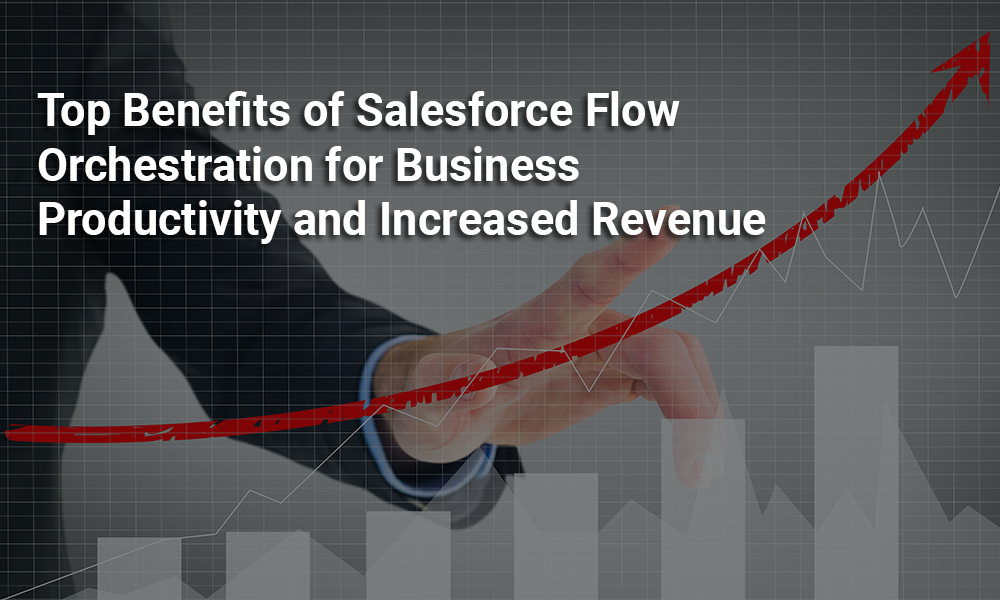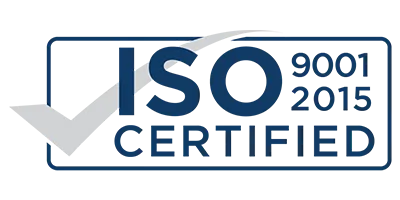Before hiring a Salesforce partner to optimize flow orchestration, go through this post.
Managing workflow requirements can sometimes be daunting for Salesforce admins. A simple workflow process has now evolved into a complex one that involves different users or departments. The complexities could take multiple days or even months to hop on to different stages of a workflow. This is where flow orchestration comes into play. It will assist you in mitigating the costly gap in your business caused by waiting periods. Additionally, it helps enhance productivity, elevate customer satisfaction, and boost revenue.
If you are facing challenges in adapting to a remote working environment and if you heavily rely on admins to take care of your configuration, deployment, and maintenance, it’s time for you to consider flow orchestration and hire a Salesforce Consulting Partner to harness its full potential.

What is Salesforce Flow Orchestration? A Brief Introduction
Designed for admins, Salesforce Flow Orchestration is a workflow tool that helps Salesforce professionals connect myriad business processes & and flows across multiple users.
Admins can easily and rapidly create sophisticated, easy-to-understand, and multi-step business processes without worrying about coding.
Yes! You read it right, creating workflows is a matter of drag and click and no code.
This new Salesforce tool enhances the impact of existing and new flows through two key feature steps and stages.
What are Steps in Salesforce Flow Orchestration?
In the context of a workflow, steps are like individual tasks. They specify which specific actions or flows you want to execute. Assign steps to specific individuals, set notifications, and define where actions or flows appear, such as on a record page. Steps provide flexibility, allowing sequential or parallel execution.
What are the Stages in Salesforce Flow Orchestration?
Think of stages as larger milestones or phases in your workflow that help organize and structure the overall process.
Stages in a workflow, group these steps together, and they are executed in a sequential order. Stages can also be separated by a Decision element to incorporate complex logic. Essentially, a stage is a collection of one or more steps.
How a Salesforce Professional Can Use Flow Orchestrator?
Are you wondering how to use the flow orchestrator? Here, we have explained the process with the example of a few use cases that are as follows –
Case 1 – Assigning Step to Multiple Users
This use case is ideal when you have a task that requires assignment to several users, either in a sequential order or all at once. You can enhance user guidance by incorporating the Work Guide component into your record pages, ensuring that users have clear instructions.
Additionally, you can create task lists to help users systematically complete their work. If your workflow requires supervision, you can set up a process for supervisors to review and sign off on completed tasks.
Alternatively, you can create a parallel assignment, enabling a queue of agents to tackle tasks as they become available, optimizing efficiency.
Case 2 – Structuring Steps in Stage
Imagine you have a series of tasks or flows that need to be completed as part of a larger process, like sales checklists, onboarding new customers, or collaborating on contracts. In this scenario, you can organize these tasks by stacking them together within a single stage. To make this user-friendly and accessible, you can use the Work Guide component, which you can add to a record page.
Case 3 – Collaborative Workflow Across Teams and Timelines
This use case demonstrates the application of stages in a workflow to facilitate collaboration across different teams and manage tasks that span extended periods. By utilizing Decision elements, you can trigger a stage based on specific record criteria, ensuring that actions are taken at the right time.
This approach allows you to stack stages that may encompass varying lengths of time and involve multiple teams. It’s particularly useful for automating complex processes like contract renewals and account outreach that may unfold over weeks, months, or even years.
The result is a streamlined and efficient workflow that ensures timely actions and seamless coordination across various aspects of your business operations.
Top Benefits of Salesforce Flow Orchestration for Business Productivity and Increased Revenue
The resilience that Flow Orchestration gives to admin is a total bliss. Admins have the full right to decide which of their developed flows will be Steps and which will be the Stage. They can easily define the Steps and organize them into the Stages as per their requirements.
Through this tool, an admin can bridge the gap that comes with complex business processes, enjoy a happy customer experience, and supercharge business revenue.
What are the Top Five Benefits of Flow Orchestration?
One of the best parts of Salesforce Orchestration is its universal applicability. It means it helps businesses automate and streamline their complex business process irrespective of industry and business size.
With proper Salesforce integration, users can experience myriad benefits, such as combining multiple flows into a single orchestration, executing all flows at once, and tailoring flows as per business-specific needs.
There are many more advantages of Salesforce Flow Orchestration. Some of them are as follows –
-
Increased efficiency and productivity:
Flow Orchestration can help you automate your most time-consuming and repetitive tasks, and free up your team to focus on more strategic work. It can also help you streamline your processes and reduce the amount of time it takes to complete tasks.
-
Reduced errors and improved accuracy:
When you automate your processes with Flow Orchestration, you can be confident that they will be executed consistently and accurately, every time. This can help you reduce errors in your data and improve the overall quality of your work.
-
Improved customer and employee satisfaction:
Flow Orchestration can help you improve your customer and employee satisfaction in a number of ways. For example, it can help you automate customer support processes to provide faster and more efficient support. It can also help you streamline your employee onboarding and training processes to help new employees get up to speed quickly.
-
Increased visibility and control:
Flow Orchestration provides you with a centralized view of all of your automated processes. This visibility can help you identify bottlenecks and make improvements to your workflows. It also gives you more control over your processes, so you can make changes as needed.
-
Reduced costs:
Flow Orchestration can help you reduce your costs by automating your manual tasks and streamlining your processes. This can free up your team to focus on more strategic work and help you improve your overall efficiency.
Read more about the benefits of Salesforce here – Salesforce for Small Businesses – Benefits, Features, and Cost of Implementation
Conclusion
Flow orchestration comes with myriad advantages. Since it follows a no-code approach, using this tool is much easier for the users. From close monitoring to seamless orchestration of flows and to their transformation, one can always do more with this tool.
You can hire a Salesforce integration partner to harness its full potential. If you are looking for a way to automate your business processes and improve your overall efficiency, Salesforce Flow Orchestration is a great option to consider.







